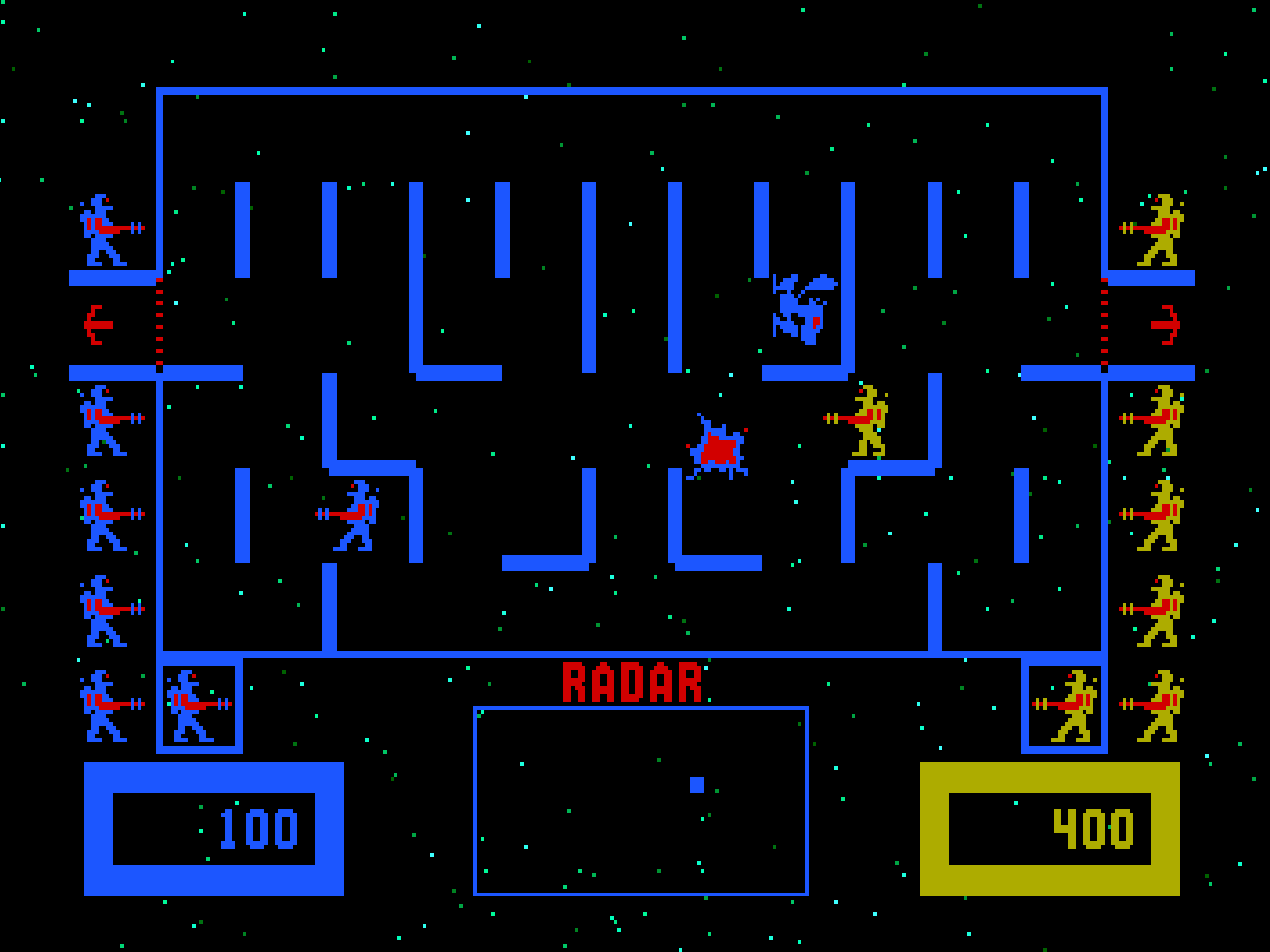Introduction
Released in 1980 by Bally Midway, Wizard of Wor brought intense two-player action to the maze shooter genre. Players control futuristic warriors, known as Worriors, battling against hordes of monsters and the evil Wizard himself inside dark, claustrophobic mazes. Combining fast-paced shooting, a foreboding atmosphere, and voice synthesis technology, Wizard of Wor carved out a unique place in early arcade history.
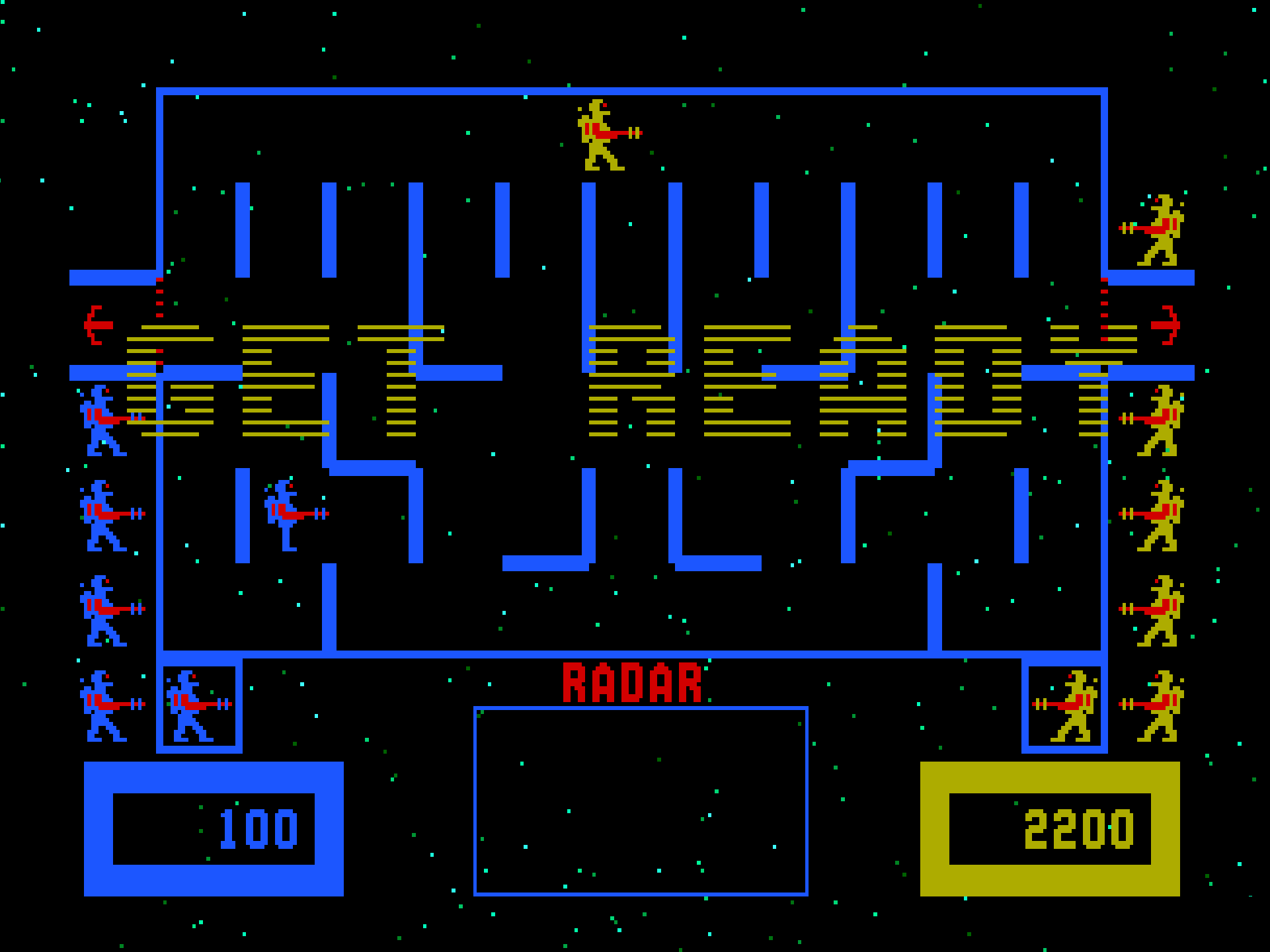
Development and History
- Developer: Dave Nutting Associates
- Publisher: Bally Midway
- Release Date: 1980
Wizard of Wor was designed to capitalize on the popularity of maze games like Berzerk and Pac-Man, but added its own distinct flavor with intense shooting mechanics and high-pressure co-op gameplay. The game is notable for its early use of synthesized speech, with the Wizard taunting players in a menacing, robotic voice—a technological novelty at the time.
The dark, simple graphics and eerie sound design worked together to create a tense arcade experience unlike most colorful, cheerful games of the era.
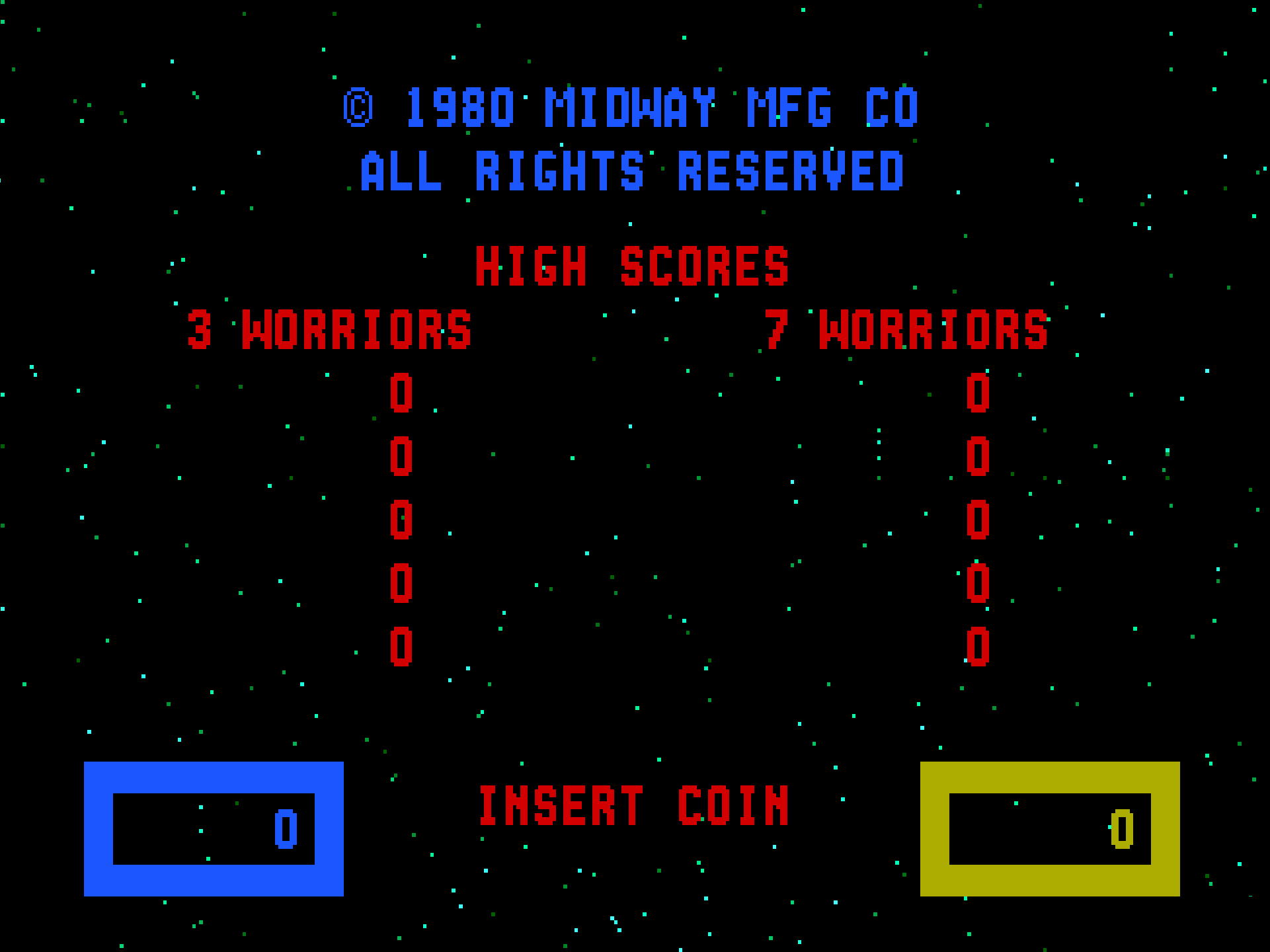
Gameplay Video
Gameplay and Mechanics
Core Gameplay
Players navigate their Worriors through a series of dungeons (mazes) while shooting at waves of monsters. Key gameplay elements include:
- Maze Navigation: Tight corridors encourage both strategic movement and quick reflexes.
- Enemy Waves: Includes Worluks, Burwors, Garwors (invisible enemies), and Thorwors.
- Wizard Battle: In advanced levels, the Wizard of Wor himself appears, teleporting and firing at players.
- Two-Player Co-Op: Players can team up—or betray each other—for bonus points.
Challenges
- Increasing Difficulty: Enemies move faster and new invisible monsters appear as players progress.
- Voice Taunts: The Wizard’s voice distracts players and raises the tension during gameplay.
- Friendly Fire: Players can accidentally (or intentionally) shoot their teammate for points.
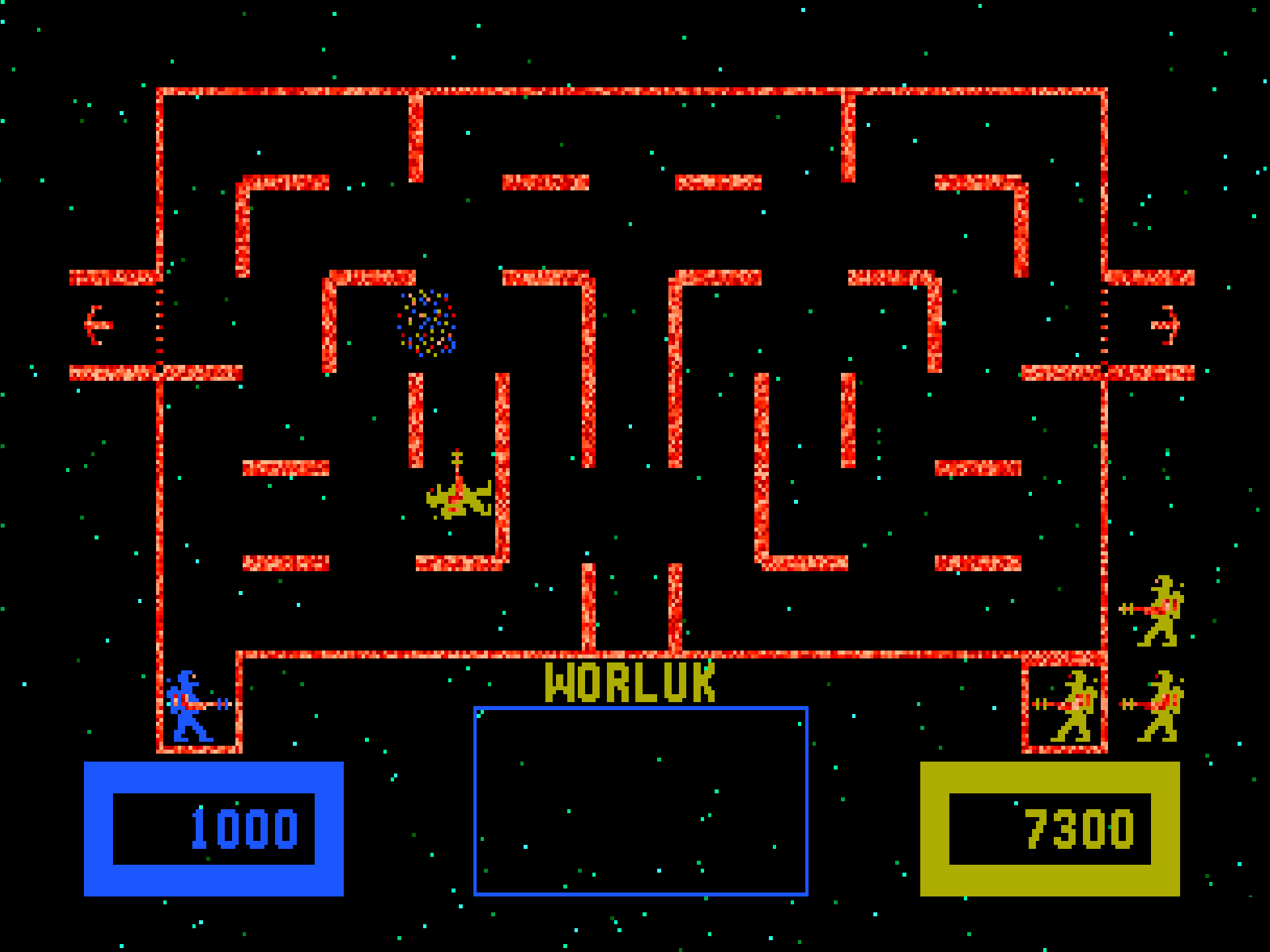
Cultural Impact and Legacy
Wizard of Wor had a strong influence in its time and beyond:
- Early Voice Synthesis: One of the first arcade games with talking characters, helping to push voice tech in gaming.
- Competitive Co-Op: One of the earliest examples of a game where co-op players could also compete.
- Home Ports: Ported to systems like the Atari 2600, Commodore 64, and Bally Astrocade.
- Cult Status: Still fondly remembered for its unique mix of tension, fast shooting, and horror elements.
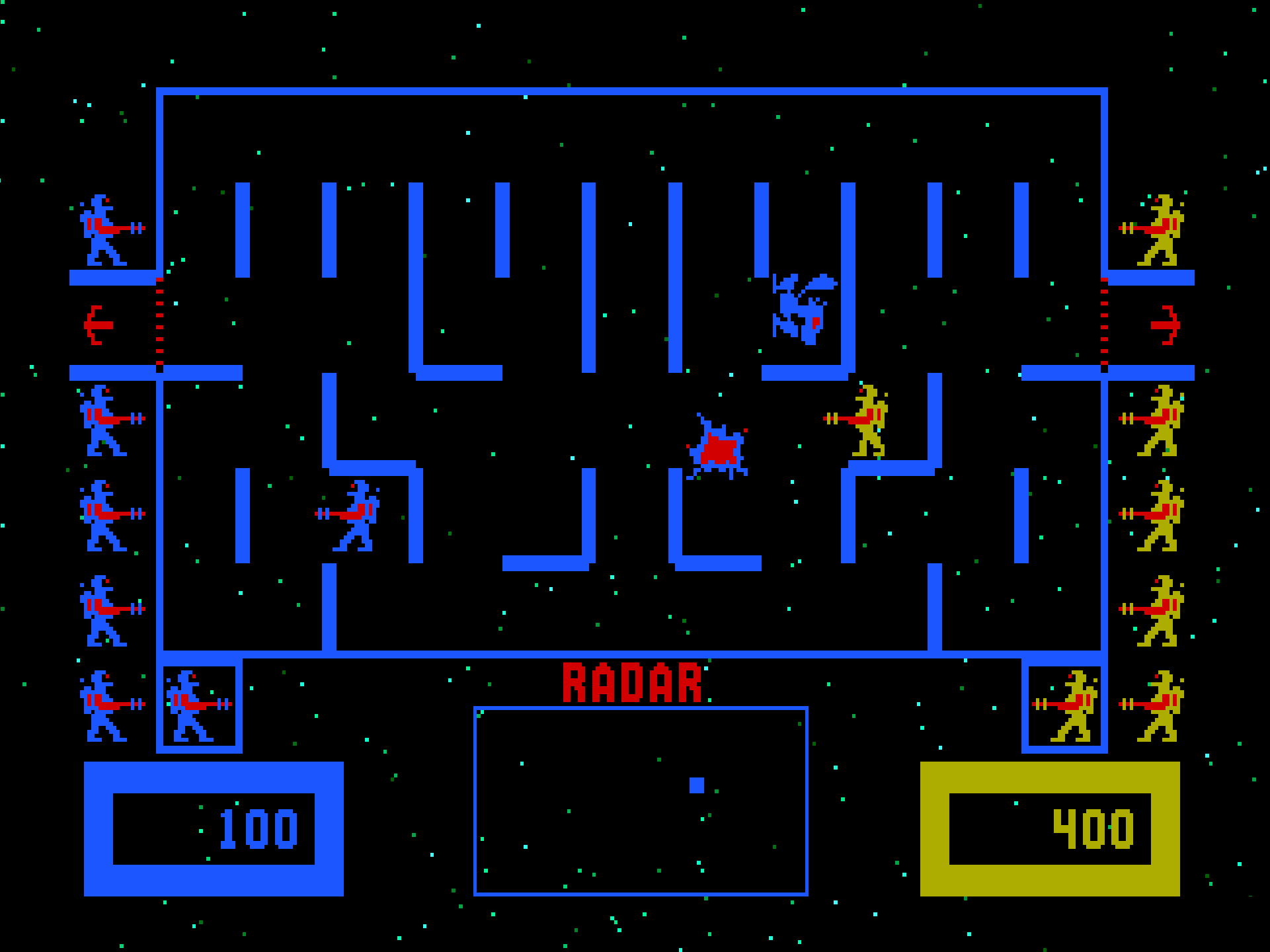
Fun Facts
- Invisible Enemies: Garwors and Thorwors could become invisible, a mechanic that forced players to shoot preemptively.
- Wizard’s Laugh: The Wizard’s eerie laugh when defeating players became iconic.
- Worluk Bonus: Killing the Worluk before it escapes gives a double-score dungeon for the next level.
- Two-Player Sabotage: Advanced players could score more by betraying their co-op partner.
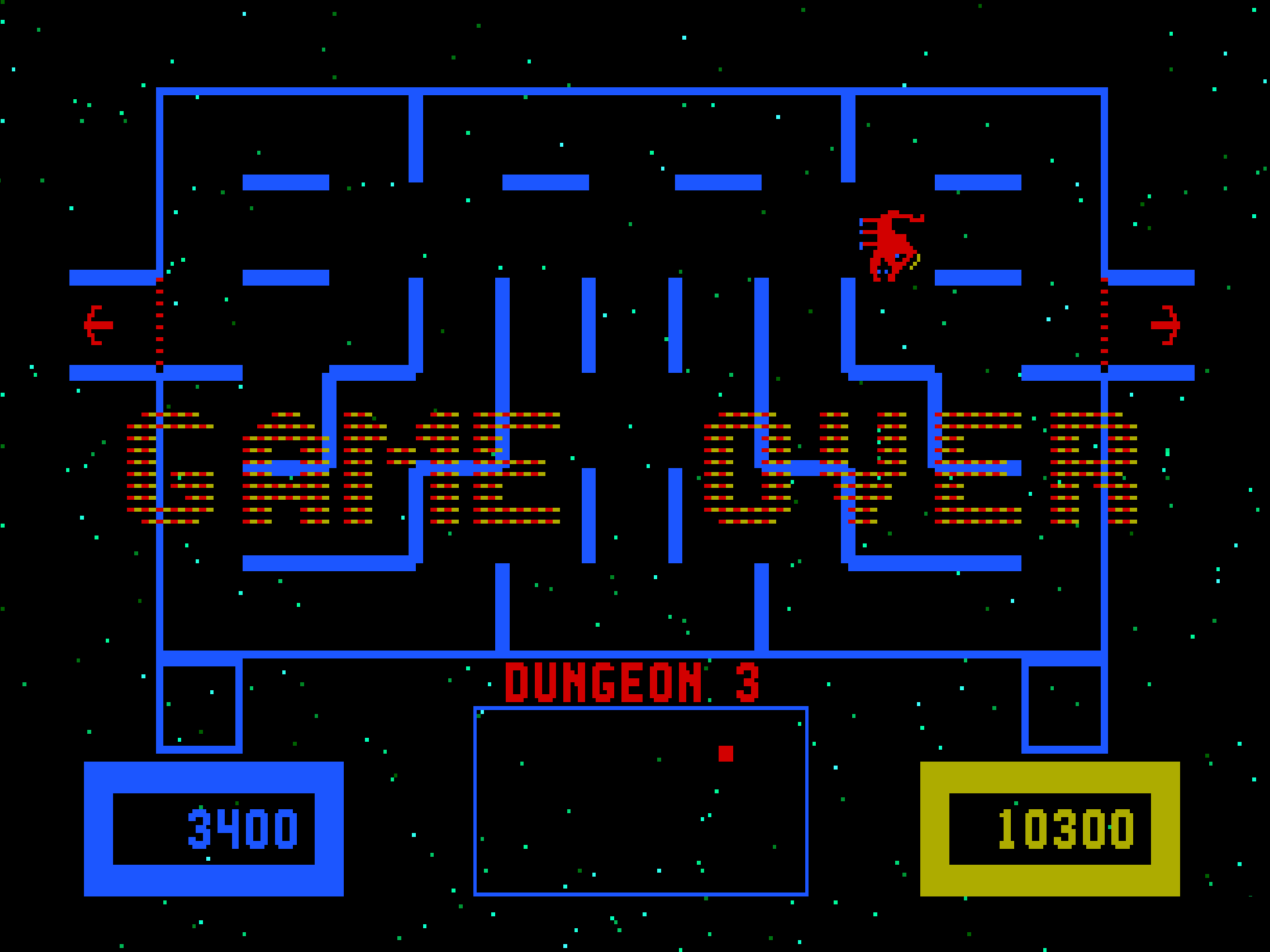
Conclusion
Wizard of Wor remains a landmark arcade game for its innovation in voice synthesis, competitive co-op mechanics, and high-tension gameplay. Its blend of maze navigation, shooting, and sinister atmosphere made it a favorite in early '80s arcades, and it continues to hold a place in retro gaming history.

